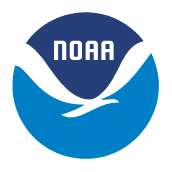New model demonstrated in the Aviation Weather Testbed
 NOAA’s experimental Rapid Refresh Forecast System (RRFS) was demonstrated at the Aviation Weather Testbed Summer Experiment from September 13-16. The Aviation Weather Testbed is hosted by the Aviation Weather Center and works to improve aviation forecasting in order to strengthen pilot and passenger safety and ease the decision-making process of airport operations management.
NOAA’s experimental Rapid Refresh Forecast System (RRFS) was demonstrated at the Aviation Weather Testbed Summer Experiment from September 13-16. The Aviation Weather Testbed is hosted by the Aviation Weather Center and works to improve aviation forecasting in order to strengthen pilot and passenger safety and ease the decision-making process of airport operations management.
RRFS is being developed by NOAA GSL and NOAA’s Environmental Modeling Center and is NOAA’s next-generation high-resolution ensemble prediction system underpinned by the community-based Unified Forecast System. RRFS provides hourly forecasts on a 3km grid with 65 vertical layers and is expected to be implemented into NOAA National Weather Service operations in late 2023.
Forecasters examined the performance of experimental RRFS and the Unified Forecast System (UFS) in comparison to the current tools used in the Traffic Flow Management Convective Forecast (TCF) process. TCF models the expected convection that would impact aviation traffic 4, 6, and 8 hours ahead. Participants were asked to develop a TCF forecast using the new experimental RRFS guidance. They also looked at RRFS forecasts of convection 8 hours or more in advance to see if they could be useful for a new impact graphic being considered. The graphic would support both commercial and general aviation to get a quick look at what weather impacts to expect over the coming days.
These experiments allow stakeholders to identify additional areas for NOAA GSL to improve the models in preparation for operational implementation.
Our Mission
Lead research and directed development through the transition of environmental data, models, products, tools, and services to support commerce, protect life and property, and promote a scientifically literate public.
Research Areas
Organizational Excellence, Earth System Prediction, Advanced Technologies, and Decision Support are the foundation to achieving the GSL Grand Challenge: Deliver actionable global storm-scale prediction and environmental information through advanced technologies to serve society.
Global Systems Laboratory

